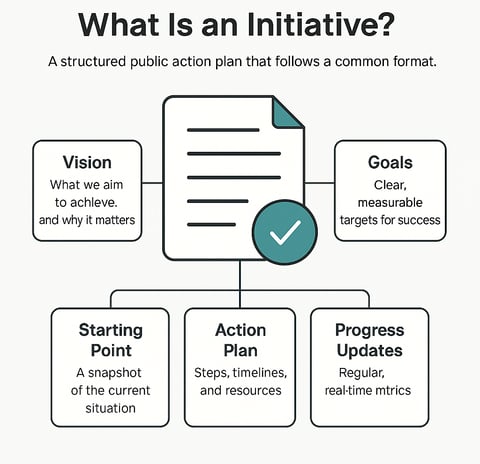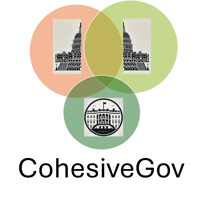Learn About Initiatives
Building Smarter Government — One Initiative at a Time
Imagine a government where every action is easy to understand, track, and trust — just like pilots, airlines, controllers, and passengers coordinate every flight through a common flight plan.
Standardized Government Initiatives make this vision real.
They give every government action a simple, structured blueprint — so leaders, teams, and citizens can work together with clarity, accountability, and confidence.
Core Components of an Initiative
Why Shift to Standardized Initiatives?
Without a common system, government work can feel fragmented, slow, and opaque.
With standardized initiatives, every action becomes:
Proactive, not reactive
Coordinated, not siloed
Transparent, not hidden
This approach moves governance forward — delivering better outcomes for everyone.
Why Standardization Matters
Using a standard format for all initiatives enables:
Seamless Collaboration: Agencies, teams, and jurisdictions can easily align their work.
Cohesive Information Flow: Data flows smoothly across systems and organizations.
Transparency for Everyone: Citizens, officials, and stakeholders see the same information.
Efficiency: Clear plans mean less confusion, faster action, and better outcomes.
Just like aviation depends on a universal flight plan, modern governance can depend on standardized initiatives to stay clear, connected, and effective.
In technical lingo this means enabling systems interoperability; all systems to easily communicate standardized data and use what they need.
What Is an Initiative?
An Initiative is a structured public action plan.
It defines what needs to happen, why it matters, how success will be measured, and who is responsible — all in a standard, easy-to-read format.
Every initiative acts like a universal information container — ensuring that actions across government are aligned, comparable, and visible.


Ready to Explore More?
See real initiatives on the dashboard →
Generate your own initiative in seconds →
Learn how initiatives power interoperable government →
Let’s build a more cohesive, transparent future — together.
Every initiative follows a common structure:
Visual overview of an initiative's structure
Vision: What we aim to achieve and why it matters.
Starting Point: A snapshot of the current situation (baseline data).
Goals: Clear, measurable targets for success (SMART format).
Action Plan: Concrete steps, timelines, responsible parties, and resources.
Progress Updates: Regular, real-time metrics displayed on a public dashboard.
This shared structure makes initiatives easy to understand, easy to compare, and easy to improve.
